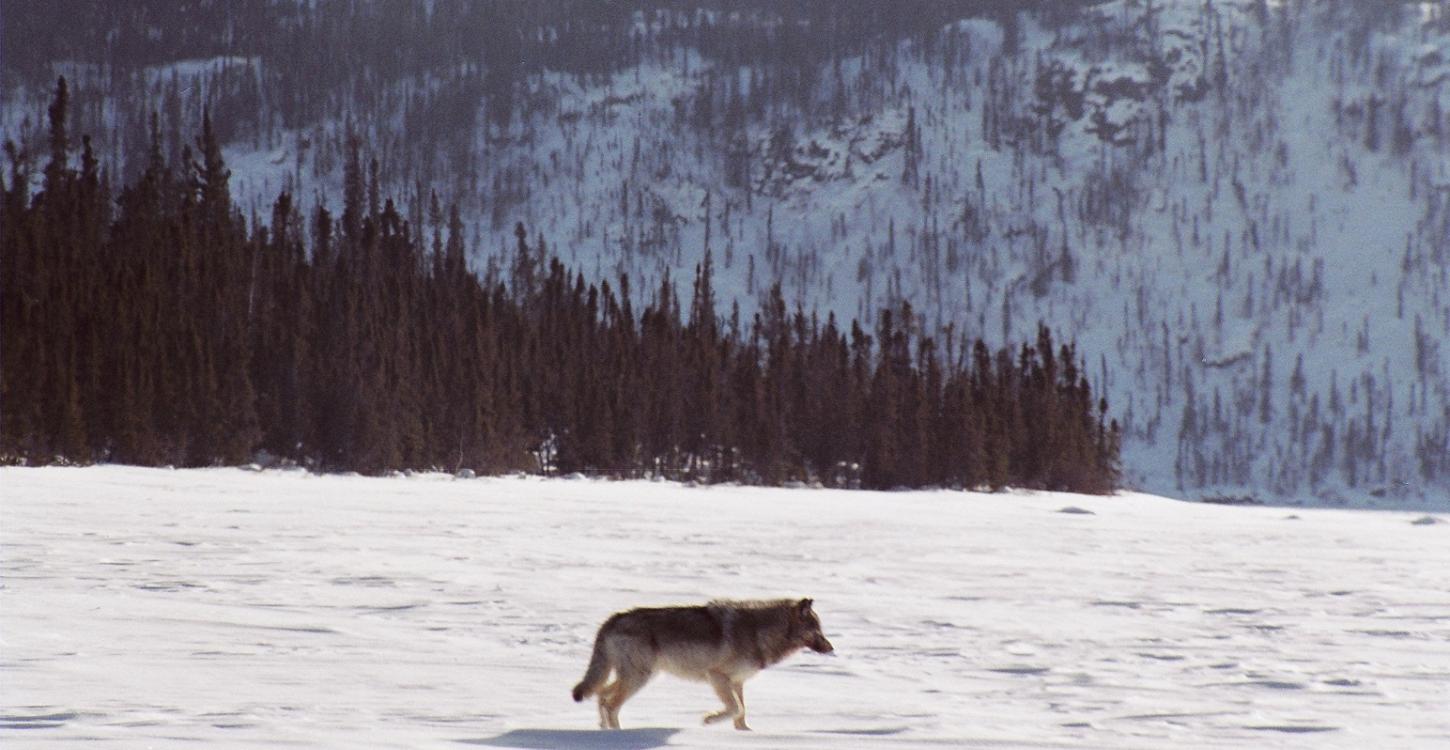
The Department of Environment and Natural Resources reported during the February Wek'èezhìı Renewable Resources Board (WRRB) meeting that there were 69 dìga harvested over the winter of 2022 as part of the five-year Dìga Management Program. Photo by Anne Gunn/GNWT-ENR
Wolf management program shows signs of success in third annual report
February 27, 2023
Dìga (wolf) carcasses collected are getting younger and dìga harvesters are having continued success as part of a five-year effort to stabilize and help recover the two main ɂekwǫ herds- Kǫ̀k’èetı̀ Ekwǫ̀ (Bathurst caribou) and Sahtì Ekwǫ̀ (Bluenose-east caribou) - in Wek'èezhìı. Those were some of the key findings in the latest annual report of the Dìga Management Program presented by Environment and Natural Resources (ENR) to the Wek’èezhìı Renewable Resources Board (WRRB), Feb. 7.
The management and monitoring program for dìga aims to reduce predation by the furbearer on the Kǫ̀k’èetı̀ Ekwǫ̀ (Bathurst caribou) and Sahtì Ekwǫ̀ (Bluenose-east caribou) herds in hopes of increasing ɂekwǫ survival rates and stabilizing/recovering both herds.
Following a pilot project in 2020, the WRRB supported a co-managed program between ENR and Tłı̨chǫ Government due to conservation concerns and the need for stronger management and monitoring of sharply declining ɂekwǫ numbers for decades.
Evaluating the success of the program largely focuses on three indicators that include the number of dìga harvested on the winter range for both herds, a catch-per-unit-effort measurement, which looks at the how far and how long it takes a hunter to access dìga for harvest, and the age structure and health of harvested dìga, which may indicate that harvesters are successfully reducing the reproductive capacity of the dìga.
Dr. Abbey Wilson, carnivore biologist with ENR told the Board that they are aiming to get a better “understanding of how many wolves there are” and their impact on ɂekwǫ in the management area once the five year program is complete.
“The wolf management program will continue for the full five years and we hope at the end of that period that we can produce a graph or a figure (with) caribou indicators and wolf metrics,” Wilson said.
Lower dìga harvests
Wilson said that 69 dìga were harvested - all ground-harvests- over the winter of 2022, which is a lower amount removed than in the previous two years. In 2020-21, there were 135 removals recorded over the winter while 85 were taken out in the inaugural year of the program in 2019-2020.
Part of the reason for that lower figure, she noted, was due to weather conditions in 2022.
“We met with some of the harvesters from Kugluktuk and the Tłı̨chǫ region over the summer and they all said that there were poor snow conditions, and the weather was really poor,” she said.
Wilson added that the catch-per-unit effort was also lower than previous years based on information compiled from questionnaires filled out by harvesters.
“On average, harvesters had to travel further to find wolves, so the catch per unit effort for distance traveled was lower,” she said.
Among other notable findings included a lower adult-to-pup ratio.
“We have seen an increase in younger animals harvested compared to previous years,” Wilson said, noting that this information is drawn from full examinations of the carcasses by the ENR Wildlife Veterinarian in a laboratory.
According to the 2022 annual report:
“The age structure of harvested wolves appears to be changing, as the harvested population was made up of 42.5 percent juveniles and 45 per cent adults this year compared to 31 per cent juveniles and 51 per cent adults in 2021.”
ENR has had a Wolf Harvest Incentive Area since 2018 which compensates hunters and trappers for dìga.
Dìga Collaring
Part of the monitoring efforts include a GPS collaring program that tracks dìga movement and by extension shows the extent to which dìga are following ɂekwǫ herds. Seven collars were put on dìga on both winter ranges in the winter of 2022, totaling 29 collars that have been deployed. 10 collars are currently transmitting data.
Another set of collars are to be put out in March and monitored later this year.